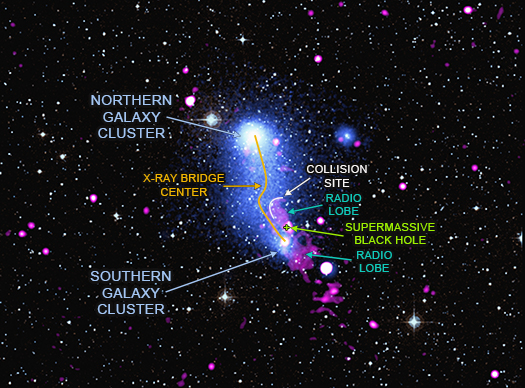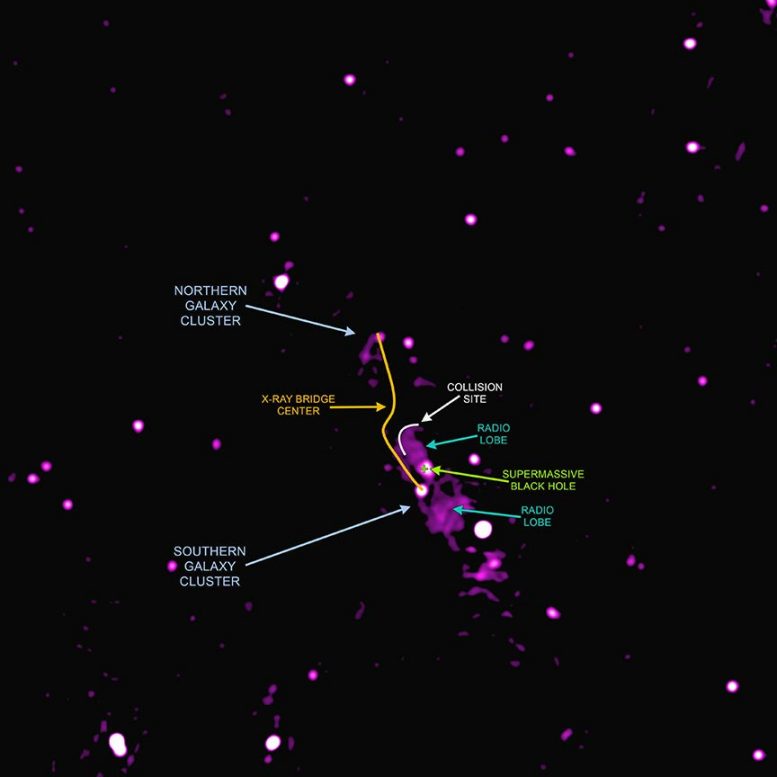A new study, based on data from ESA’s XMM-Newton and NASA’s Chandra X-ray observatories, sheds new light on a three million light-year long bridge of hot gas linking two galaxy clusters, whose shape is being bent by the mighty activity of a nearby supermassive black hole.

Galaxy clusters are the largest objects in the Universe held together by gravity. They contain hundreds or thousands of galaxies, vast amounts of multi-million-degree gas that shines brightly in X-rays, and enormous reservoirs of unseen dark matter.

The system portrayed in these images, called Abell 2384, is located 1.2 billion light years from Earth and comprises an overall mass of over 260 trillion times the mass of the Sun. In this case, the two galaxy clusters collided and then passed through each other, releasing a flood of hot gas from each cluster that formed an unusual bridge between the two objects.
The X-ray view from XMM-Newton and Chandra is shown in blue, alongside observations in radio waves performed with the Giant Metrewave Radio Telescope in India (shown in red) and optical data from the Digitized Sky Survey (shown in yellow). The new multi-wavelength view reveals the effects of a jet shooting away from a supermassive black hole in the center of a galaxy in one of the clusters.
A paper describing this work was published in the January 2020 issue of the Monthly Notices of the Royal Astronomical Society with the title: ” A rare case of FR I interaction with a hot X-ray bridge in the A2384 galaxy cluster” by V Parekh, T F Laganá, K Thorat, K van der Heyden, A Iqbal and F Durret. DOI: 10.1093/mnras/stz3067
Source: esa.int, https://chandra.harvard.edu/
Image Credits: X-ray: NASA/CXC/SAO/V.Parekh, et al. & ESA/XMM-Newton; Radio: NCRA/GMRT; Optical: NASA/CXC/DSS
